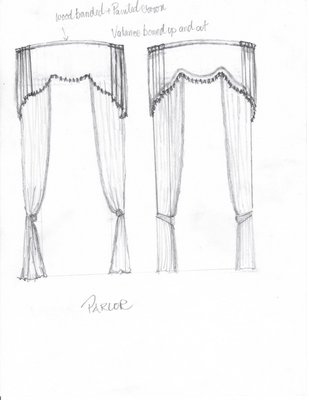
The advances in window glass technology have enabled architects to utilize vast expanses of glass, virtually skin-wrapping every imaginable structure in gleaming transparency. The skylines of our cities are transforming into ice crystal menageries, like turning a rock geode inside out. And along with this newfound physical transparency comes a newfound self-exposure—the target of and pleasure for an endemic voyeurism. For some, this reality TV-like self-exposure may be a narcissistic titillation. Others in self-denial simply pretend that people just turn their eyes and don’t look. But for those averse to the concept of a fishbowl existence, there is a solution. With flick of a switch, they can electronically activate shades that are sandwiched between the glass. For others less tech-savvy, mini-blinds may tilt within the glass envelopes, adjusting for privacy. There are electronic roll-down vinyl shades, clattering vertical blinds, vertical chains and strings and, of course, reflective film applied permanently to the glass for privacy. But for those of us mere mortals living far below those crystal towers—with brick, mortar, stone, wood or shingle spacing out our windows on the world—a pair of curtains is still of use.And curtains (drapes and drapery are for the Holiday Inn) are having a bit of a revival after having been thrown asunder for the last decade. Though cautiously making restrained inroads back into the dressmaking realm, decorative curtains are appearing to flourish in quite a few current issues of the shelter magazines and design blogs. Perhaps a desire to embellish is following the economic upturn. Maybe the urge to “dress up” the window finds it roots in the hipster movement, where clothing has taken a more sartorial turn and “fashion” is an aspirational concept, not a vile elitist dead end.
Whatever the musings—curtains, pelmets, cornices, valances, tiebacks, finials, rings, poles, shirring and ruching are swift on the return. We are not (lest you tremble) hurtling back to the ‘80s, where every Park Avenue window was dressed as if to attend Cinderella’s ball, but a certain tailored grace and measured whimsy is on the rise again.
Curtains are not as voluptuously interlined with bump or table felt as they used to be, although the British (the finest curtain makers in the world) still insist on this both for their drafty houses and the substantial presence it imbues. Here, across the Pond, we now prefer the more unstructured feel that simple lining or no lining at all imparts. Despite Thom Browne’s high-water pants and ankle exposure, curtain fashion now is a slight one- to two-inch break on the floor (no deep puddling—gone with the dot.com bust).
Pelmets and cornices (stiffened valances) are all the rage—though shorter and less deep than they used to be. We used to figure two inches of pelmet depth per vertical foot off the floor. Now it is one inch, to appear more contemporary and with the times. As opposed to the squared-off corners, pelmets are curving and rounding as they return to the wall. Cut-out shapes decorating the bottoms are simplified but continually being explored.
Valances (soft fabric) are looser and the pleats are more open or the shirring is less full and never heavily “flounced.” Headings to valances, if used at all, are shorter, and the bottoms are trimmed with a tailored tape, a shorter fringe or a tassel fringe sheared of its thickness. As I said before, designers are treading carefully into these unfamiliar waters after years of rings, poles and straight side panels—if they use any curtains at all!
Tieback rosettes are a place designers are finding expression. Recycled architectural fragments, tools and toys are just a few items in their grab bags that I have witnessed. And the tie itself ranges from hemp roping to woven metal, from African beads to glass rods.
Forever classic, curtains sewn to rings and hung on poles will always remain in the window treatment lexicon. From the 16th century on, elaborate, hand-woven tapestries hung over drafty doorways, rings and poles have been a curtain maker’s staple. However, today, fashion rules on these as well. Attenuated and sleek in satin, nickel, bronze, gunmetal and steel, these poles sport German engineering at its finest. Coming out of Brooklyn, that innovative hot spot of creative design, are square poles slashed, gouged and hammered with rings you would be proud to bracelet your wrist with.
Curtain pleatings and headings have bowed to the times as well with swollen goblet pleats and smocked headings taking backseat to simple pleating, which is a gathered threefold sewn together right at the top of the curtain, giving a tailored yet lush, rich feel. French pleats or pinch pleats, a stiff fan pleat sewn or “pinched” four inches below the heading, is so unnatural and machine-made looking that it has garnered an almost retro cool popularity for boutique trend-setting hotels. Beats me!
Though I have seen few swags, jabots, tails, bishop’s sleeves, puffy balloon shades, bows, lambrequins or five-inch fringes return onto the design stage, I am sure that Mario Buatta’s popular book may startle a new generation of young designers who may take up that festooned gauntlet. Those window treatments in the ‘80s truly meant that the client got the treatment—shelling out more than a few nickels for the elaborate confections. But the austerity of the recent years, sweeping clean our rooms of curtains, meant that our rooms lost the warmth and elegance and, ofttimes, architectural correction that these window treatments provided. Happily, the fashions of the times are ushering in a chic new approach to curtaining the window and reminding us that there exists a kinder, gentler path to privacy.